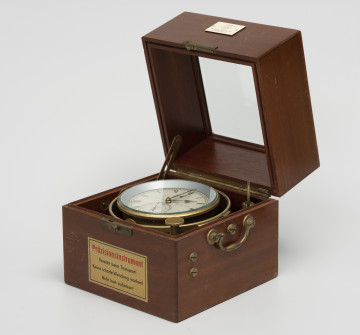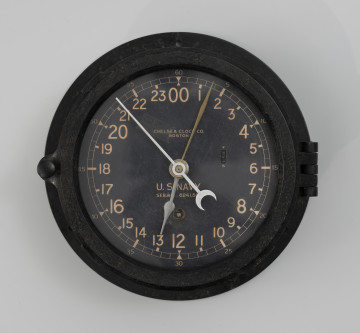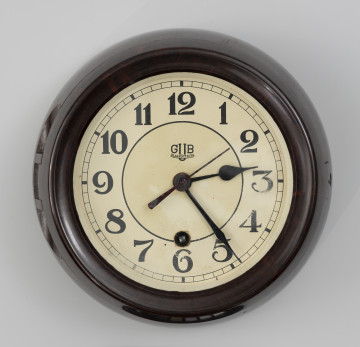
Chronometer mounted on Cardan's suspension.
1901 — 1950
National Museum in Szczecin
Part of the collection: Equipment of watercrafts
Ship clocks, also known as chronometers, were used to adjust life on a ship but were primarily used for navigation. For this reason, they had to be resistant to temperature changes, and the sealed casing had to protect against moisture. The first clock with a measurement error of fewer than 2 minutes, which in navigation corresponds to half a degree of longitude, was built in 1759 by John Harrison (1693-1776), a carpenter and self-taught watchmaker. His H-4 chronometer weighed almost one and a half kilograms. With an accuracy of one second per month, it allowed the longitude at sea to be determined very precisely. The featured timepiece, the Chronostat IV model from Golay, exemplifies the development of these devices in the 1960s, when quartz technology began to be used. The previously spring-driven balance mechanism was replaced by a battery-powered quartz resonator. The Chronostat IV was developed in collaboration with one of Switzerland's oldest watchmaking companies, Longines, to meet the requirements of the French Navy's hydrological institute, which is why some pieces bear the institution's engraved abbreviation, SHOM, under the manufacturer's logo and name. Now superseded by electronic clocks and satellite navigation, ship clocks were mainly placed in the chartrooms, on the deck, or, later on, in the operations room, in the engine room and on the piers. Leszek Kocela
Author / creator
Object type
chronometer, watercraft equipment
Technique
batch production
Material
metal, wood, brass, glass
Origin / acquisition method
purchase
Creation time / dating
Creation / finding place
Owner
Muzeum Narodowe w Szczecinie
Identification number
Location / status

1901 — 1950
National Museum in Szczecin

1941 — 1945
National Museum in Szczecin

1955 — 1970
National Museum in Szczecin
DISCOVER this TOPIC
National Museum in Szczecin
DISCOVER this PATH
Educational path